by Ethan Paxton, ’22
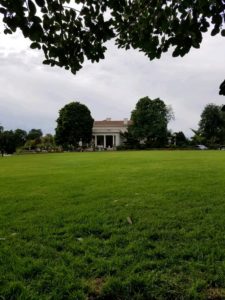 A massive compound spanning a whopping 207 acres, The Huntington Library, Art Collections, and Botanical Gardens is perhaps one of the most overwhelming places I have ever had the pleasure of visiting. Upon my first visit to the Huntington, I was so overwhelmed with the massive scale and absolute beauty of the property that I had very few opportunities to really pause and assess all that I was surrounded by. It seemed every aspect of the property had some unique aesthetic–the gardens, the architecture, the library, the art. One could not look in any single direction and not find some beautiful creation. As easy as it can be to see the Huntington as a solely beautiful experience, one’s eye can potentially lead to a gross over-simplification of San Marino’s remarkable epicenter for art. The Huntington paints a picture of a world that can be, acting as a kind of Eden, a refuge from the hurried lifestyle of today, challenging people via art and beauty, to look deeper and experience the peace and tranquility that can be afforded to them if they see life through a different lens.
A massive compound spanning a whopping 207 acres, The Huntington Library, Art Collections, and Botanical Gardens is perhaps one of the most overwhelming places I have ever had the pleasure of visiting. Upon my first visit to the Huntington, I was so overwhelmed with the massive scale and absolute beauty of the property that I had very few opportunities to really pause and assess all that I was surrounded by. It seemed every aspect of the property had some unique aesthetic–the gardens, the architecture, the library, the art. One could not look in any single direction and not find some beautiful creation. As easy as it can be to see the Huntington as a solely beautiful experience, one’s eye can potentially lead to a gross over-simplification of San Marino’s remarkable epicenter for art. The Huntington paints a picture of a world that can be, acting as a kind of Eden, a refuge from the hurried lifestyle of today, challenging people via art and beauty, to look deeper and experience the peace and tranquility that can be afforded to them if they see life through a different lens.
A wealthy man, Henry Huntington was the nephew of Collis P. Huntington, one of the owners of the Central Pacific Railroad,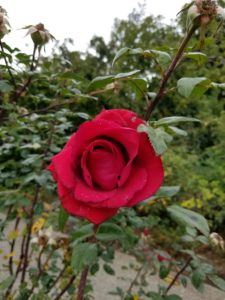 the reason a man such as him born in New York eventually wound up in Southern California. It was there that Henry purchased the San Marino Ranch, the same land the Huntington now sits on. He used much of his wealth to accumulate a vast number of collections, a passion shared by his love interest Arabella, the widow of his uncle Collis. Henry vied for her love through amassing huge collections, appealing specifically to her passion for European culture and style, one of the main reasons why the Huntington has such a prolific European art collection today. In fact, Myron Hunt, the architect hired by Huntington, inserted a Mediterranean Revival Style into the architecture of the Huntington so Henry could appeal to Arabella since she was not fond of Southern California. Much of what exists at the Huntington is a result of Henry Huntington’s ambitious collecting–for himself and to impress his lover–so it is a marvel how the diverse collection of botanicals, books, art, and architecture has become such an important part of the surrounding community, acting as a research and educational institution, but also as a cultural and artistic hub.
the reason a man such as him born in New York eventually wound up in Southern California. It was there that Henry purchased the San Marino Ranch, the same land the Huntington now sits on. He used much of his wealth to accumulate a vast number of collections, a passion shared by his love interest Arabella, the widow of his uncle Collis. Henry vied for her love through amassing huge collections, appealing specifically to her passion for European culture and style, one of the main reasons why the Huntington has such a prolific European art collection today. In fact, Myron Hunt, the architect hired by Huntington, inserted a Mediterranean Revival Style into the architecture of the Huntington so Henry could appeal to Arabella since she was not fond of Southern California. Much of what exists at the Huntington is a result of Henry Huntington’s ambitious collecting–for himself and to impress his lover–so it is a marvel how the diverse collection of botanicals, books, art, and architecture has become such an important part of the surrounding community, acting as a research and educational institution, but also as a cultural and artistic hub.
My personal experiences at the Huntington have been very interesting because my two visits have offered me different things yet been equally beneficial in my overall understanding and enjoyment of the institution. 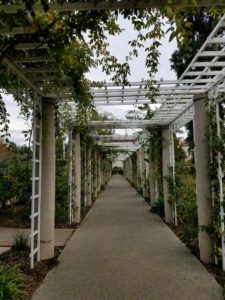 There can be a variety of ways one experiences things at the Huntington; academically, emotionally, artistically, or as a tourist. Though my first visit left me awestruck and reduced me to childlike marveling and wonder at all that was around, knowing what I was going to see allowed me to connect more artistically and emotionally with the location upon my second visit.
There can be a variety of ways one experiences things at the Huntington; academically, emotionally, artistically, or as a tourist. Though my first visit left me awestruck and reduced me to childlike marveling and wonder at all that was around, knowing what I was going to see allowed me to connect more artistically and emotionally with the location upon my second visit.
My appreciation for the institution was exponentially increased because I was afforded the opportunity to have an emotional and artistic experience with the institution, rather than just a “tourist-y” one whilst clicking pictures, or an academic one hearing an expert relay facts and figures about the grounds. Make no mistake, there is a place for the other kinds of experiences, but given all the Huntington offers, I would have been disappointed had I not had the chance to come around again, pause, and soak in the Huntington as being the physical manifestation of art.
The Huntington itself is the art I connected with because of the prolific diversity among the kinds of art it kept, for no kind of artist could be here without finding something they could connect with.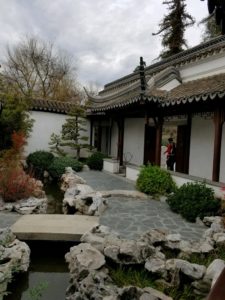
The natural beauty of the botanical gardens is a less present form of art among the LA museums and galleries, acting as the artistic representation of God and His Creation. The cultural inclusion of the Chinese, Japanese, and Australian gardens was incredibly interesting, as was the juxtaposition of the abundant tropical greenery and the dry desert garden. The European and American art galleries contained art from a variety of artists and coupled each other by providing different perspectives and times. Though there was a lack of sonic art in terms of composed music, listening carefully one could discern the accompaniment of sounds at the Huntington as its own musical style. The chirping of birds, rustle of leaves, and rushing of water displayed nature’s sounds while the echoes of the Orbit Pavilion, the silence in the library, and the clamor of tourists inserted humanity’s footprint on the natural world. One feels inserted into this complex artistic tapestry, for everywhere you look there is something new, something different, much as is with this city.
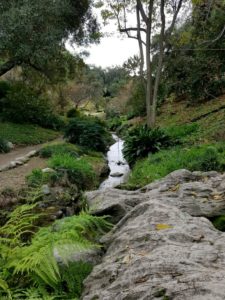 Taking the Huntington as a text, and therefore seeking to interpret, analyze, and understand what the location tells us, I found that the Huntington acts much like a metaphor of the LA community as whole. Los Angeles literally is a domain of the arts, as is the Huntington. There is art everywhere you look in LA; it surrounds the city it lies at the very heart of everything that is created. The Huntington is the same way, and much like LA, it acts as an escape for people, as a refuge from the realities of what we have turned the world into, and affords people the opportunity, if they chose to take it, to leave behind the turbulent, hurried lifestyle we all fall victim to and invite us to enjoy the moment, to enjoy the simplest things in life and marvel at them for their unique beauty. Sometimes, stopping to literally smell the roses in the Rose Garden is all it takes to really remind someone of the simple pleasures that exist in our world. That’s why LA is so important, because even though it is not dressed up nearly as beautifully as the Huntington, the creativity that exists amidst the people is perfect and pure. It offers a refuge, and for all those who come from chaos have a chance to gawk and awe as I did, and find real peace among the art.
Taking the Huntington as a text, and therefore seeking to interpret, analyze, and understand what the location tells us, I found that the Huntington acts much like a metaphor of the LA community as whole. Los Angeles literally is a domain of the arts, as is the Huntington. There is art everywhere you look in LA; it surrounds the city it lies at the very heart of everything that is created. The Huntington is the same way, and much like LA, it acts as an escape for people, as a refuge from the realities of what we have turned the world into, and affords people the opportunity, if they chose to take it, to leave behind the turbulent, hurried lifestyle we all fall victim to and invite us to enjoy the moment, to enjoy the simplest things in life and marvel at them for their unique beauty. Sometimes, stopping to literally smell the roses in the Rose Garden is all it takes to really remind someone of the simple pleasures that exist in our world. That’s why LA is so important, because even though it is not dressed up nearly as beautifully as the Huntington, the creativity that exists amidst the people is perfect and pure. It offers a refuge, and for all those who come from chaos have a chance to gawk and awe as I did, and find real peace among the art.
We use cookies to improve your experience on our site. By using our site, you consent to cookies.
Websites store cookies to enhance functionality and personalise your experience. You can manage your preferences, but blocking some cookies may impact site performance and services.
Essential cookies enable basic functions and are necessary for the proper function of the website.
These cookies are needed for adding comments on this website.
Statistics cookies collect information anonymously. This information helps us understand how visitors use our website.
Google Analytics is a powerful tool that tracks and analyzes website traffic for informed marketing decisions.
Service URL: policies.google.com